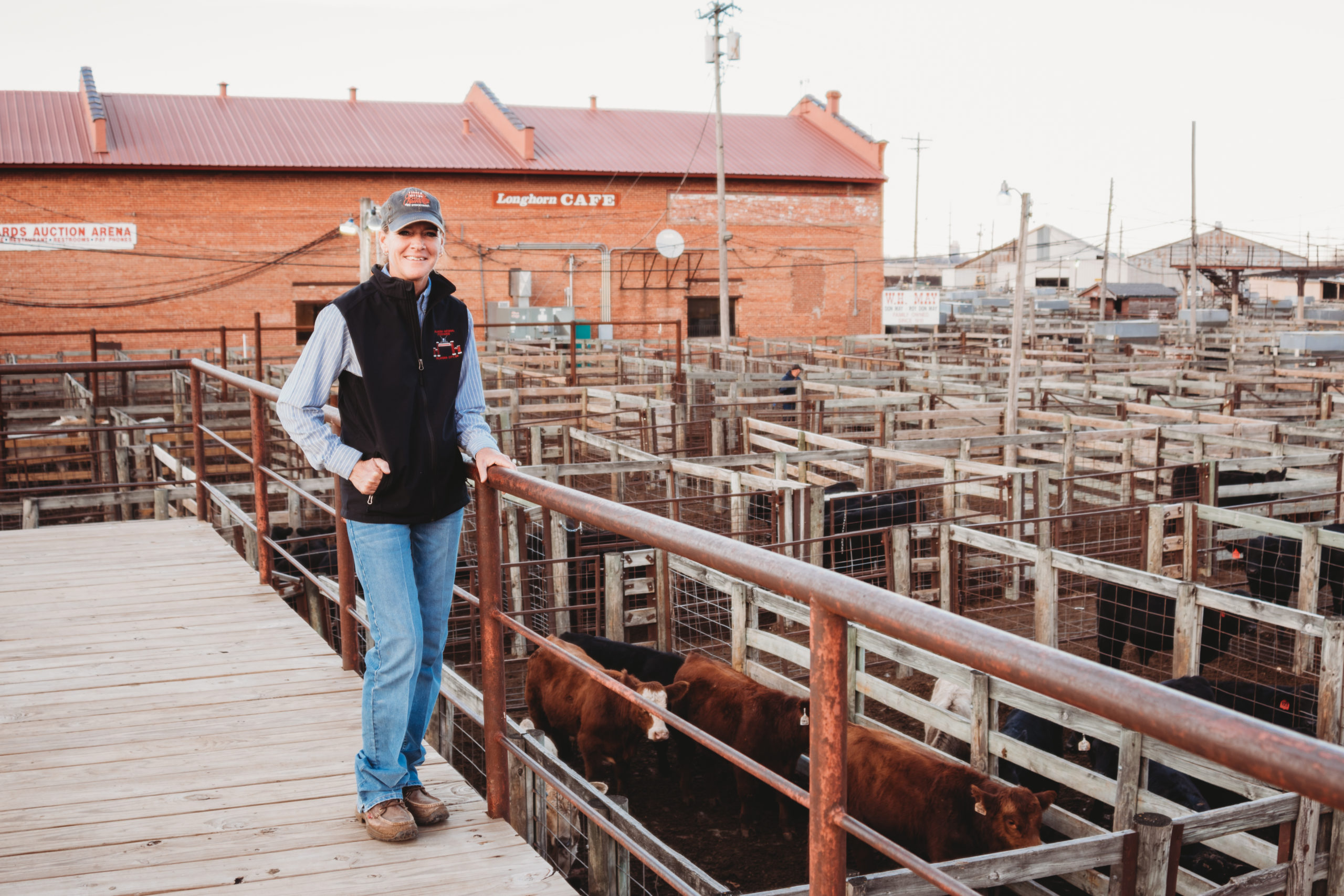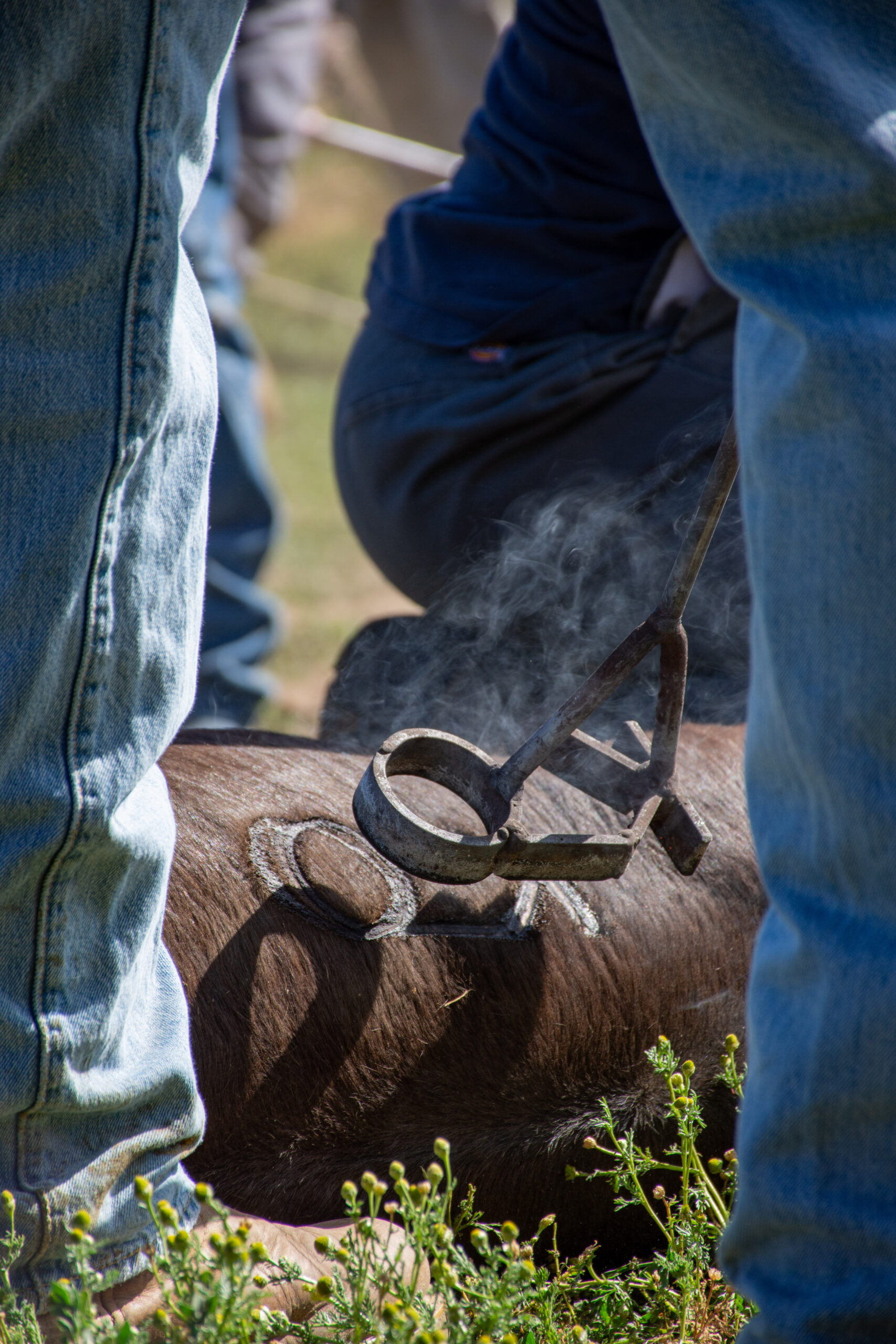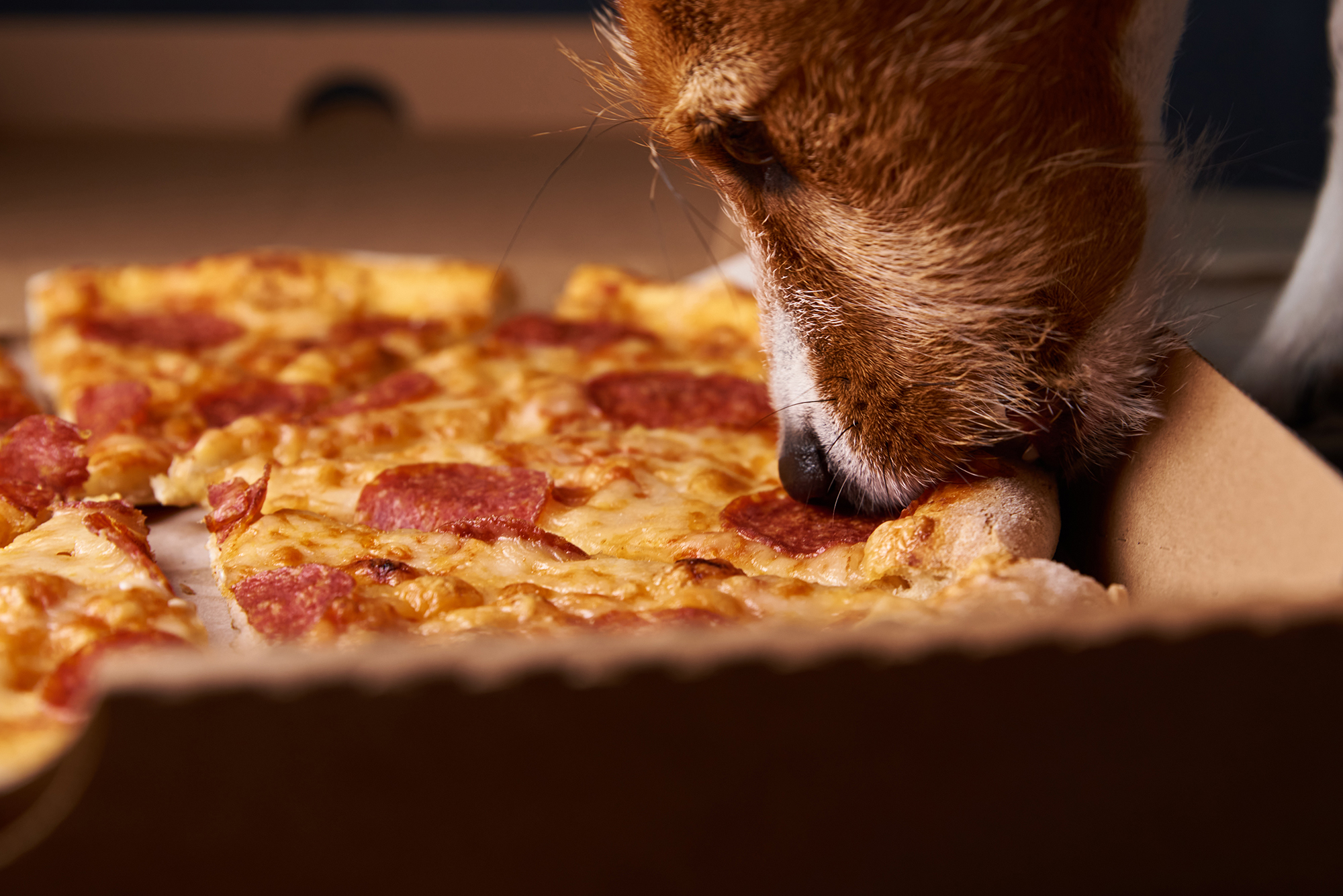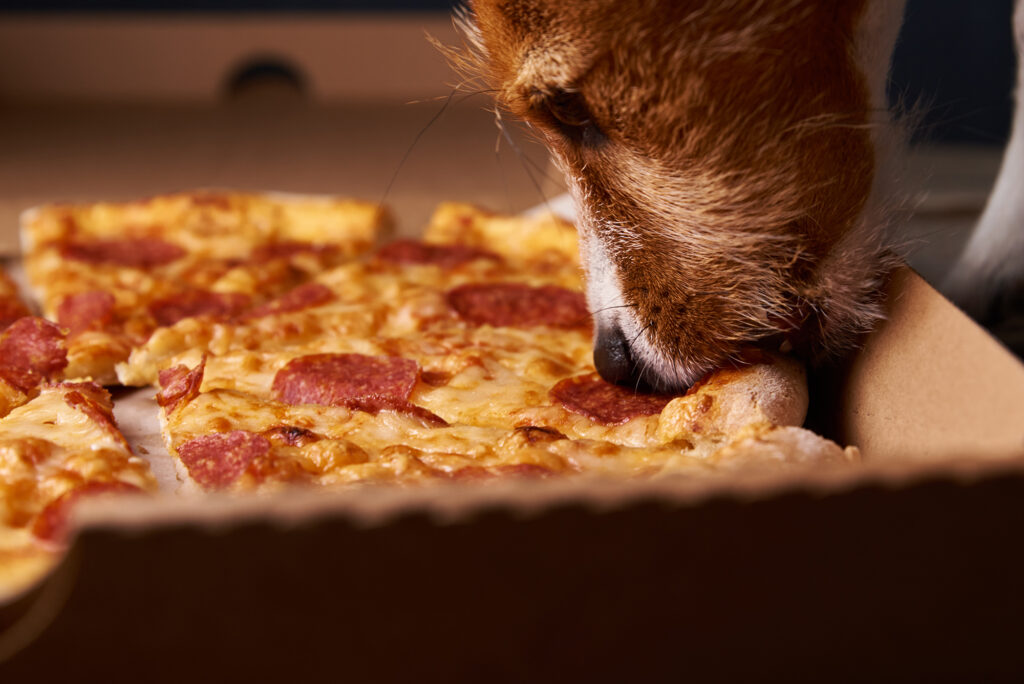Country Lifestyle
Work Hard; Be Nice

Nearly 40 years ago, late on a Sunday, two young girls spent the evening working with their father in the Oklahoma National Stockyards. “We had gone with dad to help sort, but wound up cleaning water tanks, and doing a lot of other stuff, too. They were expecting a big run – probably 18 to 20,000 – and we were just worn out. My sister and I were sitting in a single-cab pickup truck getting ready to leave the yard, and she had her head resting on my shoulder, and I had my head resting on hers,” Kelli Payne reminisced. “I remember my father said, ‘Girls, girls! Wake up! This is the most beautiful thing you’ll ever see in your life.’ There were pots lined up all the way down the street and as far as you could see were lights on the semis.”
While Payne, likely less than 10 years old at the time, didn’t appreciate her father’s enthusiasm then, she admits the memory is one of her favorites. “I didn’t understand him at the time because I was just a kid, but when the pots are all lit up and I’m walking around the yards, I’m still mesmerized by it.” She added, “It planted a seed of appreciation for it and for finding beauty wherever you work. To see that still happening today is pretty cool.”
Last April, Kelli Payne, of Mustang, Okla., made history when she became the first female General Manager of the Oklahoma National Stockyards in its 110 year history. It might be a new position, but for Payne, the job’s as fitting as a trusted pair of boots.
You see, she basically grew up on the old red bricks. Her father, Glenn Payne, began his career at the Stockyards as an order buyer for a company called S & C when Kelli was about five years old. In the mid-1980s, Payne purchased a commission firm called Wright-Halliburton, which eventually merged with another company in 1990 to become Central-Halliburton. Kelli spent most of her time at the Stockyards, and even when she went to college, she would return on the weekends to help sort cattle and help in any way she could.
“I even sat out a semester of college so I could work, simply because I loved it. It was never on my radar to become the general manager here, but every new job I took would open up more doors. I was never bored or tired of a job, but opportunities kept coming up for personal growth. God just kept opening those doors for me,” Payne recalled.
Some of those jobs included working for Congressman Wes Watkins, working for nonprofits, managing several Main Street Programs, and owning her own painting and remodeling company.
She started her first official job at the Stockyards as a clerk for Stockman’s Order Buying for Tom Gilliam and Bill Griffeth. “Tom and Bill were actually just inducted into the inaugural class of the Cattle Marketers Hall of Fame. I went to the induction in Pratt, Kansas to show my support. They gave me an opportunity and it was an honor to be able to be there for them. They’ve done some awesome things and been around a long time,” she said.
Eventually Kelli took the position of Executive Director for Stockyards City Main Street, and shortly thereafter was offered the Yards Liaison position for the Oklahoma National Stockyards. She held that position until last April, when she took on the General Manager title.
“I’m still serving as the President of Stockyards City Main Street. It’s been challenging running both, and time management is really crucial. Thankfully I don’t require a whole lot of sleep, but I think it is aging me relatively faster than I’d like to admit,” she said with a laugh. “It’s about balance. I don’t know how I get through some of my days, but I do it because I love every part of it.”
For Kelli, there was never a question about continuing her involvement with the tourist side of Stockyards City.
“I think it is so important to stay involved, especially with that district. With Stockyards City and the actual Stockyards being born at literally the same time, it’s important to preserve that feel and culture. Folks want to come see it, and I want it to feel like home for everyone,” she said.
Day-to-day duties for Kelli include a lot of talking and visiting, continually getting the pulse of not only the stockyards, but also the agriculture community as well as national politics. “Someone has to always be gathering information or we lose our opportunity to anticipate change,” she explained. “I check in with people daily to get reports and exchange ideas. I want to know how the morale of the company is. I’m not able to be in the ‘yards as much as I would like to, but whether it is a sale day or not I’ll talk to commission firms or order buyers. When I make it home at night, I’ll look at where we are news wise and check out the political landscape.”
Public speaking and guiding tours continue to be a major part of Payne’s job description. “The tourists just keep coming through, and I enjoy getting to meet all the groups. I think it’s also important to do trade shows and sponsorships and invite people out here to see what is going on,” she said. “It is easy to take for granted that we have the crown of being the world’s largest market, but there are folks new to the industry. We have a lot of shippers who have a heritage of selling here, but there are also folks getting into the business that don’t know we exist.”
Setting Goals
One of Kelli’s major goals for the Stockyards was to increase the number of cattle being sold each week. “We’re certainly getting that done. This was a huge week (Week of Nov. 18) for us. We had been expecting a run of about 12,000, and we wound up with 15,400,” Payne recalled.
That meant that Payne and her team were up more than 48 hours straight. “The sale Monday didn’t get over until 6:30 a.m. Tuesday, and of course Tuesday’s sale started at 8 a.m. and didn’t end until 3:30 a.m. Wednesday. Most of our people hadn’t worked sales like that, and I was pretty rusty, so it was tough,” she said. “Still, the team was great and we pulled together.”
That feeling of being a part of a team is another major goal. “It takes all of us to make it work. We value everyone’s input, and there is no suggestion too small or that will be brushed off, even from customers. We want that openness and transparency. This is a really large location, but it has that small-town barn feel, and we want to keep that going. No one is too small to sell here,” she said.
Teamwork played a major role last December, when several different people of the Stockyards came together to apprehend two cattle thieves.
It started when Scott McCormack of National Commission Firm noticed stolen cattle on the grounds. “He knows his customers’ cattle, and these were out of Kansas and we don’t typically have a lot of Kansas shippers because there are so many barns up there. These cattle had just been unloaded, so I went to my guys who had unloaded them and got a description,” Kelli recalled.
It happened that a Yard Supervisor had spotted the thieves’ rig by Cattleman’s Steakhouse, so everyone involved knew they were close and would likely try to intercept the check.
“We had already called the authorities, but we were having to keep it quiet. In Oklahoma Law, it doesn’t matter how the cattle are sold, the thieves just have to touch the check for them to be arrested. It all started about 9 a.m., and by 10 they were in handcuffs,” she said. “Everyone had to work together to make this apprehension.”
Assuming the matter was over, Kelli was surprised by a call from a Kansas Radio Station. “They said they wanted to do a story on us, and that they do a $5,000 reward for cattle theft. I knew I couldn’t give it to just one person, because everyone had a hand in it, so we just put it towards having a big party when they came down to do the presentation. It was a lot of fun and great for morale. The Rodeo Opry came out and we had BBQ and the team was able to sit down, visit, and have a good time with each other,” she said.
Kelli also took the opportunity to get several staff members to be BQA certified. “That same day we did testing so they could get certified for animal handling. It’s a goal to get everyone on the yard certified, and it’s opportunities like that that we are looking for,” she said.
Read more in the January issue of Oklahoma Farm & Ranch.
Country Lifestyle
Riding for the Brand

By: Christopher Dysinger
According to the Code of the West a man who has integrity is one who rides for the brand. If you are unfamiliar with cowboy parlance this phrase is used to describe being loyal to the outfit you work for. Cowboys were, “intensely loyal to the outfit they were working for and would fight to the death for it. They would follow their wagon boss through hell and never complain.” -Teddy Blue Abbot. Riding for the brand means being loyal and when I consider what it means to be loyal I am reminded of the words of the Lord Jesus to His disciples in Matthew 16:24, “Then said Jesus unto His disciples, If any man will come after Me, let him deny himself, and take up his cross and follow Me.” To me, to take up the cross and follow the Lord is the epitome of what it means to ride for the brand.
When you place your trust in the Lord Jesus you are signing on to His outfit, to speak the language of the West. When you called upon the name of the Lord Jesus by faith, He saved you and from this point you are riding for His brand. In taking up your cross and following Him you have pledged to be loyal, and this means you face any hardship or trial like a cowboy on the trail moving the herd. Any complaint must be swallowed in the same way you would swallow a cup of coffee. When I hear our faith and loyalty to the Lord Jesus put into these terms it stirs something within me that moves me to keep right on riding for the brand.
Louis L’amour wrote, “Riding for the brand was an expression of loyalty to a man’s employer or the particular outfit he rode for. It was considered a compliment of the highest order in an almost feudal society. If a man didn’t like a ranch or the way they conducted their affairs he was free to quit, and many did; but if he stayed, he gave loyalty and expected it. A man was rarely judged by his past only by his actions. Many a man who came west left things behind him he would rather forget, so it was not the custom to ask questions. Much was forgiven if a man had courage and integrity and if he did his job. If a man gave less than his best, somebody always had to pick up the slack, and he was not admired.” It is the same when a person gives his or her heart to Jesus.
When you come to the Lord Jesus you are not judged by your past. When you come to the Lord Jesus, repenting of sin and seeking forgiveness, everything from your past is left behind. All will be forgiven. 1 John 1:9 reads, “If we confess our sins, He is faithful and just to forgive us our sins, and to cleanse us from all unrighteousness.” When you place your faith in the Lord Jesus you are promising to be loyal and in return you will receive the same. He has promised that He will never leave us or forsake us. When you walk with the Lord Jesus through life you are indeed, “riding for the brand.”
“Riding for the brand” is not just an expression of loyalty nor is it just an expression of pride, it is also an expression of love. When a cowboy claims to be riding for the brand, he is telling any other outfit who may seek his loyalty, that he cannot give it, because he has given his word to another. It is the same when we pledge our faith and loyalty to the Lord Jesus. If any would call us away from Christ we cannot go, because we are riding for the brand.
The End
This article is an excerpt from the book, The Bible and the Code of the West by Dr. Christopher Dysinger.
Country Lifestyle
Farm Dogs & Table Scraps

What’s Safe and What’s Not?
Growing up on a farm, our dogs were tough. They roamed the pastures, slept under the barn, and ate just about anything they could get their paws on—whether we meant for them to or not. I’ll admit, I never thought twice when one of our old cow dogs snatched a biscuit off the table or licked up a spill from the barn floor. I’ve even seen a dog steal a whole rib bone off a plate and trot off like he’d won the lottery. And somehow, they always seemed fine.
But here’s the thing—just because they survived doesn’t mean it was safe. For every farm dog that lucked out, there’s another that wasn’t so fortunate. Some human foods can be downright toxic to dogs, and a little bit of bad luck (or a smaller, more sensitive dog) can turn a harmless snack into an emergency.
Common toxic foods lying around the farmhouse
If you’ve got a farm dog—or any dog, really—you need to be aware of the dangers lurking in everyday foods. Some of the biggest culprits include:
Chocolate – The darker it is, the worse it is. Even a little can cause vomiting, seizures, or worse.
Grapes & Raisins – No one’s exactly sure why, but they can cause kidney failure fast.
Onions & Garlic – In large enough amounts, these can destroy red blood cells, leading to anemia.
Xylitol (Found in Sugar-Free Gum & Candy) – This artificial sweetener can send a dog’s blood sugar crashing and cause liver failure.
Alcohol – Even small amounts can be deadly to dogs, affecting their nervous system much more than it does ours.
Bones from Cooked Meat – While not necessarily toxic, they can splinter and cause serious internal injuries.
Macadamia Nuts – These can lead to weakness, vomiting, and even paralysis in dogs.
What to do if your dog eats something toxic
First, don’t panic—but don’t ignore it either. If you know your dog ate something dangerous, call your vet immediately. They can tell you whether to induce vomiting or if it’s something that requires urgent care. If it’s after hours, contact the ASPCA Animal Poison Control Center (888-426-4435) or the Pet Poison Helpline (855-764-7661).
Prevention is always the best medicine, so keep toxic foods out of reach. That might mean keeping the trash can secured, making sure kids don’t slip the dog a treat under the table, or just being more mindful of what’s left on the counter.
Our farm dogs might have been lucky, but luck isn’t a great strategy when it comes to their health. A little awareness goes a long way in making sure they stay happy, healthy, and ready for the next day’s work.
For more information
ASPCA Animal Poison Control: www.aspca.org/pet-care/animal-poison-control
Pet Poison Helpline: www.petpoisonhelpline.com
Visit www.akc.org/expert-advice/nutrition/foods-your-dog-should-never-eat
Country Lifestyle
Summer Squash and Corn Chowder

By Lacey Vilhauer
Total time: 40 minutes
Servings: 6-7
Ingredients
- 6 slices bacon, cooked and crumbled and 1 1/2 Tbsp rendered bacon fat reserved
- 1 1/2 lbs yellow squash, chopped (about 3 medium)
- 2/3 cup thinly sliced celery
- 1 cup diced onion
- 1 Tbsp flour
- 2 cloves garlic, minced
- 2 3/4 cup milk (I used 1%)
- 5 cups canned or fresh cut corn (from about 6 ears corn), divided
- 1/2 cup heavy cream
- 1 1/2 tsp chopped fresh thyme (or 1/2 tsp dried)
- 3/4 tsp salt, then more to taste
- 1/4 tsp freshly ground black pepper, then more to taste if desired
- 3/4 cup shredded cheddar cheese, for serving
- Chopped green onion for garnish (optional)
Instructions
Heat 4 tsp reserved bacon fat in a large pot over medium-high heat. Add celery and onion and sauté 2 minutes then add the squash.
Saute until tender, about 6 minutes, adding in garlic and flour during last 2 minutes of sauteing. Reduce heat slightly.
Add 1 1/2 cups milk, 2 cups of the corn, thyme, salt and pepper to the sauteed veggies.
To a blender add remaining 3 cups of corn, remaining 1 1/4 cups milk and the cream. Process in blender until nearly smooth (about 30 seconds).
Add pureed mixture to pot and stir to blend. Cook until mixture reaches a light boil.
Serve warm with shredded cheese, crumbled bacon and sliced green onions if desired.
-

 Attractions8 years ago
Attractions8 years ago48 Hours in Atoka Remembered
-

 Country Lifestyle11 months ago
Country Lifestyle11 months agoJuly 2017 Profile: J.W. Hart
-

 Country Lifestyle9 years ago
Country Lifestyle9 years agoThe House a Treasure Built
-

 Country Lifestyle4 years ago
Country Lifestyle4 years agoThe Two Sides of Colten Jesse
-

 Outdoors7 years ago
Outdoors7 years agoGrazing Oklahoma: Honey Locust
-

 Equine8 years ago
Equine8 years agoUmbilical Hernia
-

 Outdoors5 years ago
Outdoors5 years agoPecan Production Information: Online Resources for Growers
-

 Farm & Ranch7 years ago
Farm & Ranch7 years agoHackberry (Celtis spp.)





